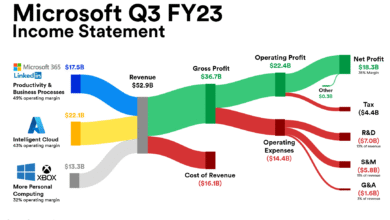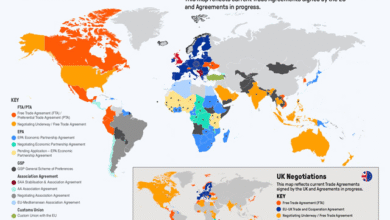CyberArk Acquisition Talks Boost Stock Price Significantly

The news of a potential CyberArk acquisition by Palo Alto Networks has sent ripples through the cybersecurity market, causing CyberArk’s stock to surge dramatically. Reports indicate that Palo Alto Networks is considering an acquisition valued at over $20 billion, marking a strategic expansion in its portfolio, particularly in the realm of identity management software. Nikesh Arora, CEO of Palo Alto Networks, is known for his aggressive acquisition strategy, and if this deal proceeds, it would be his most significant move yet. Amid increasing threats from artificial intelligence security innovations and ransomware attacks, this acquisition could bolster Palo Alto Networks’ capabilities in enhancing their cybersecurity offerings. Investors are responding positively, reflecting confidence in the future growth of both CyberArk and its aligning with a dominant player in the industry.
A monumental shift may be underway in the world of cybersecurity as discussions surrounding the takeover of CyberArk by Palo Alto Networks gain momentum. This acquisition appears poised to redefine the landscape of identity management solutions and establish a stronger foothold for Palo Alto Networks in the escalating cybersecurity market. Under the guidance of Nikesh Arora, the company has steadily grown through strategic acquisitions, elevating its position in a sector increasingly challenged by threats related to artificial intelligence and security breaches. The proposed merger would not only elevate CyberArk’s stature but also enhance Palo Alto Networks’ comprehensive security capabilities. As experts analyze the implications of such a significant consolidation, the interest surrounding CyberArk’s valuation and role in future cybersecurity strategies is only expected to intensify.
Overview of CyberArk’s Stock Surge
The recent buzz surrounding CyberArk’s stock is primarily driven by reports of acquisition talks with Palo Alto Networks, a dominant player in the cybersecurity arena. Following the news, CyberArk’s shares surged by 18%, reflecting the market’s optimism about the potential transaction valued at over $20 billion. This spike illustrates how investor sentiment can shift dynamically based on merger and acquisition speculations, especially in the rapidly evolving cybersecurity market. With the increasing necessity for robust security solutions in the wake of heightened cyber threats, market reactions like this are not uncommon.
In addition to the immediate stock response, CyberArk’s performance over the past year has been noteworthy, showcasing a remarkable 52% rise in share price. This growth, combined with the acquisition news, suggests that investors are confident in CyberArk’s role in the identity management software sector. As the cybersecurity landscape grows increasingly competitive, especially with artificial intelligence security becoming a priority, companies like CyberArk are positioned advantageously, making them prime targets for acquisition.
Frequently Asked Questions
What does the potential Palo Alto Networks acquisition of CyberArk mean for the cybersecurity market?
The potential acquisition of CyberArk by Palo Alto Networks could significantly impact the cybersecurity market, enhancing Palo Alto Networks’ portfolio in identity management software and cloud security. This acquisition aligns with the industry’s increasing focus on advanced cybersecurity solutions amid rising threats posed by artificial intelligence and ransomware.
How has CyberArk’s stock reacted to the reports of acquisition talks by Palo Alto Networks?
CyberArk’s stock experienced a remarkable surge, rising by as much as 18% after reports of acquisition discussions with Palo Alto Networks. This spike reflects investor optimism about the potential deal, with CyberArk’s share price approaching record levels amid heightened interest in cybersecurity stocks.
What are the competitive implications of the CyberArk acquisition for identity management software?
If Palo Alto Networks successfully acquires CyberArk, it could reshape the competitive landscape of the identity management software sector. This acquisition would allow Palo Alto to strengthen its offerings against competitors like Microsoft and Okta, integrating CyberArk’s advanced solutions into its broader security framework.
What is the significance of Palo Alto Networks’ acquisition strategy in relation to CyberArk?
Palo Alto Networks has aggressively pursued acquisitions to enhance its cybersecurity capabilities. Acquiring CyberArk would represent a strategic move to expand its reach in the identity management software market, a critical area as businesses increasingly seek comprehensive security solutions.
How might advancements in artificial intelligence affect the CyberArk acquisition talks?
Advancements in artificial intelligence are driving demand for more robust cybersecurity solutions, making companies like CyberArk attractive as acquisition targets. Palo Alto Networks’ interest in acquiring CyberArk may be influenced by the necessity to bolster its defenses against AI-driven threats in the cybersecurity market.
What financial performance did CyberArk report prior to the acquisition news?
CyberArk reported a net income of approximately $11.5 million and revenues of about $318 million in the first quarter, reflecting a 43% growth year-over-year. This strong financial performance enhances its attractiveness as a potential acquisition target for companies like Palo Alto Networks.
How does the potential acquisition of CyberArk fit into Palo Alto Networks’ overall business strategy?
The acquisition of CyberArk would fit into Palo Alto Networks’ strategy of solidifying its position as a leading cybersecurity provider. By integrating CyberArk’s identity management software, Palo Alto aims to offer a more comprehensive suite of cybersecurity solutions, addressing the complex needs of modern enterprises.
What initial reactions have been observed regarding CyberArk’s acquisition discussions?
Initial reactions have shown a positive sentiment for CyberArk, with its stock ranking significantly higher after news of acquisition talks with Palo Alto Networks. However, shares of Palo Alto experienced a slight decline, reflecting investor caution despite the broader potential for growth in the cybersecurity market.
| Key Aspect | Details |
|---|---|
| Stock Reaction | CyberArk’s stock jumped 18% after acquisition talks were reported. |
| Market Capitalization | Palo Alto Networks has a market cap of approximately $132 billion. |
| CEO’s Acquisition Strategy | Nikesh Arora has been pursuing acquisitions since 2018, with this potential deal being the largest. |
| Recent Performance | CyberArk’s stock has increased by 29% this year and reached a market cap of $21 billion. |
| CyberArk’s Business | CyberArk specializes in identity management software and competes with firms like Microsoft and Okta. |
| Financial Performance | In Q1, CyberArk reported $11.5 million in net income on revenues of $318 million, a 43% YOY growth. |
Summary
The CyberArk acquisition by Palo Alto Networks represents a significant strategic move in the cybersecurity industry. Following the news, CyberArk’s stock saw remarkable gains, reflecting investors’ confidence in the company’s future under such a potential partnership. This acquisition would not only enhance Palo Alto’s capabilities but also bolster CyberArk’s position in a competitive market. The ongoing discussions highlight the importance of strengthening cloud security in an era of increasing threats.




